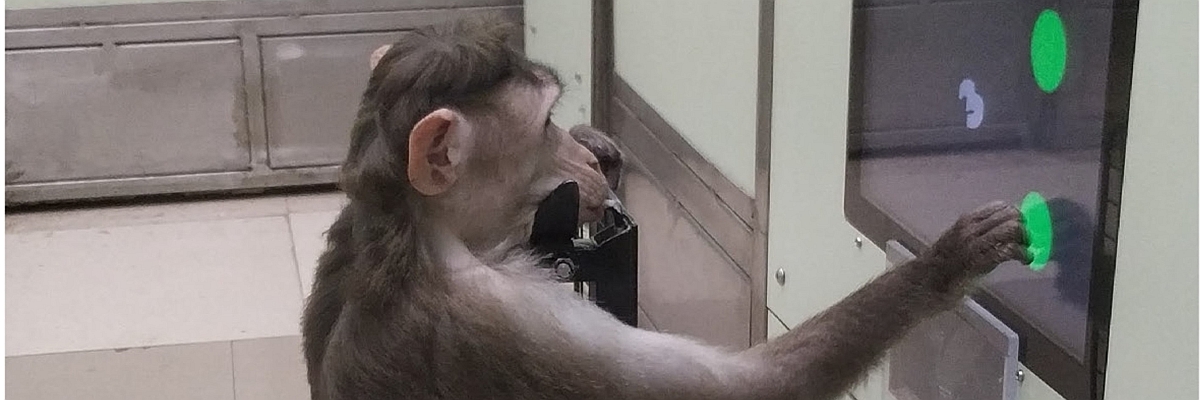Studying animal vision in a naturalistic environment
– Arpit Omprakash
Macaque monkeys are widely used in cognitive studies because they are highly intelligent social creatures with many similarities to humans. They are usually brought into specialised labs and constrained to obtain brain recordings and track eye movements while they perform complex cognitive tasks.

In a recent study, researchers led by SP Arun at the Center for Neuroscience developed a novel lab environment mimicking a natural setting to study cognition in unrestrained, freely moving monkeys. The setup consisted, among other things, of a naturalistic group housing chamber and a behaviour room where the monkeys could perform tasks on a touchscreen workstation. The monkeys were trained to voluntarily position their heads on a chinrest to learn and perform complex cognitive tasks. One task that the monkeys were trained to perform was to determine if two images shown one after the other were the same.
The researchers were able to track eye movements while monkeys carried out the task, without forcefully restraining the monkeys, using cameras and infrared illuminators placed above and below the workstation.
As proof of novel exciting behaviours that could be observed in this facility, the researchers let an untrained monkey into the behaviour room with a trained monkey, to see if it could learn the task by simply observing the trained monkey – and to their surprise, it learned the task much faster than the researchers’ own methods. The design, therefore, provides a unique environment where scientists can also study novel social interactions while the monkeys are learning, which is currently not possible with traditional methods.
REFERENCE:
Jacob, G., Katti, H., Cherian, T., Das, J., Zhivago, K. A., & Arun, S. P. (2021). A naturalistic environment to study visual cognition in unrestrained monkeys.eLife, 10, e63816.
https://doi.org/10.7554/eLife.63816
LAB WEBSITE:
http://www.cns.iisc.ac.in/home/people/sp-arun/
https://sites.google.com/site/visionlabiisc




